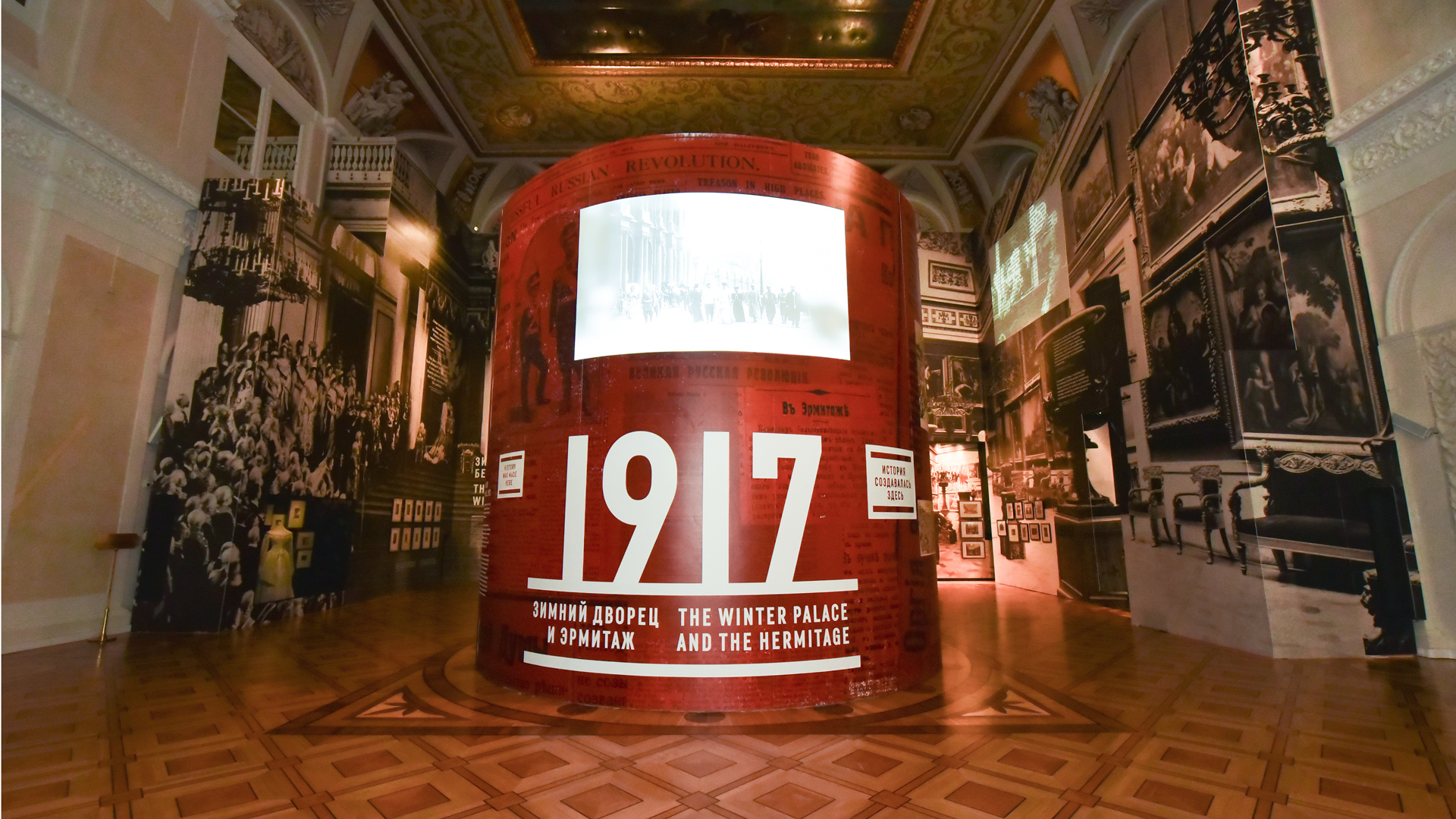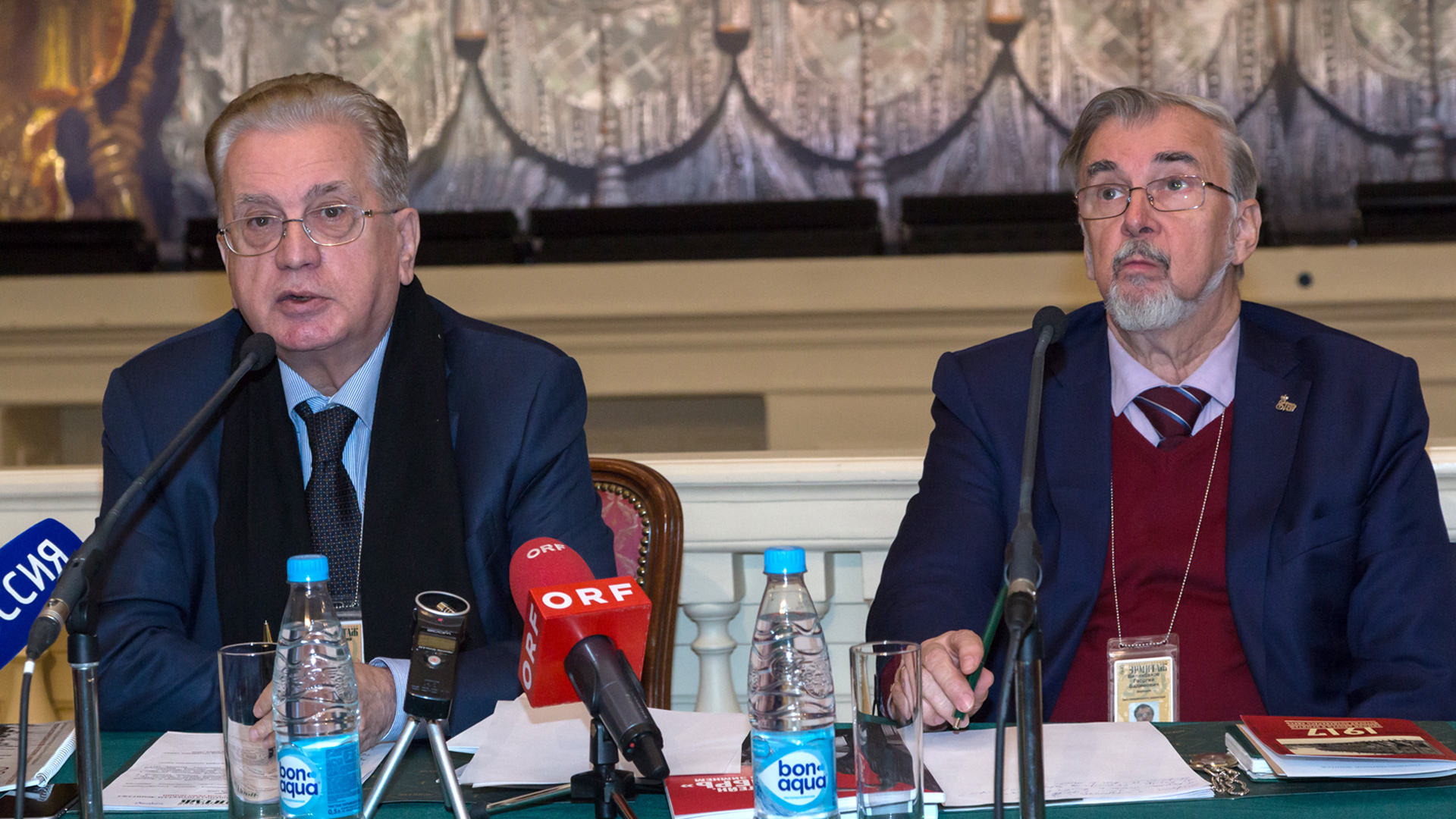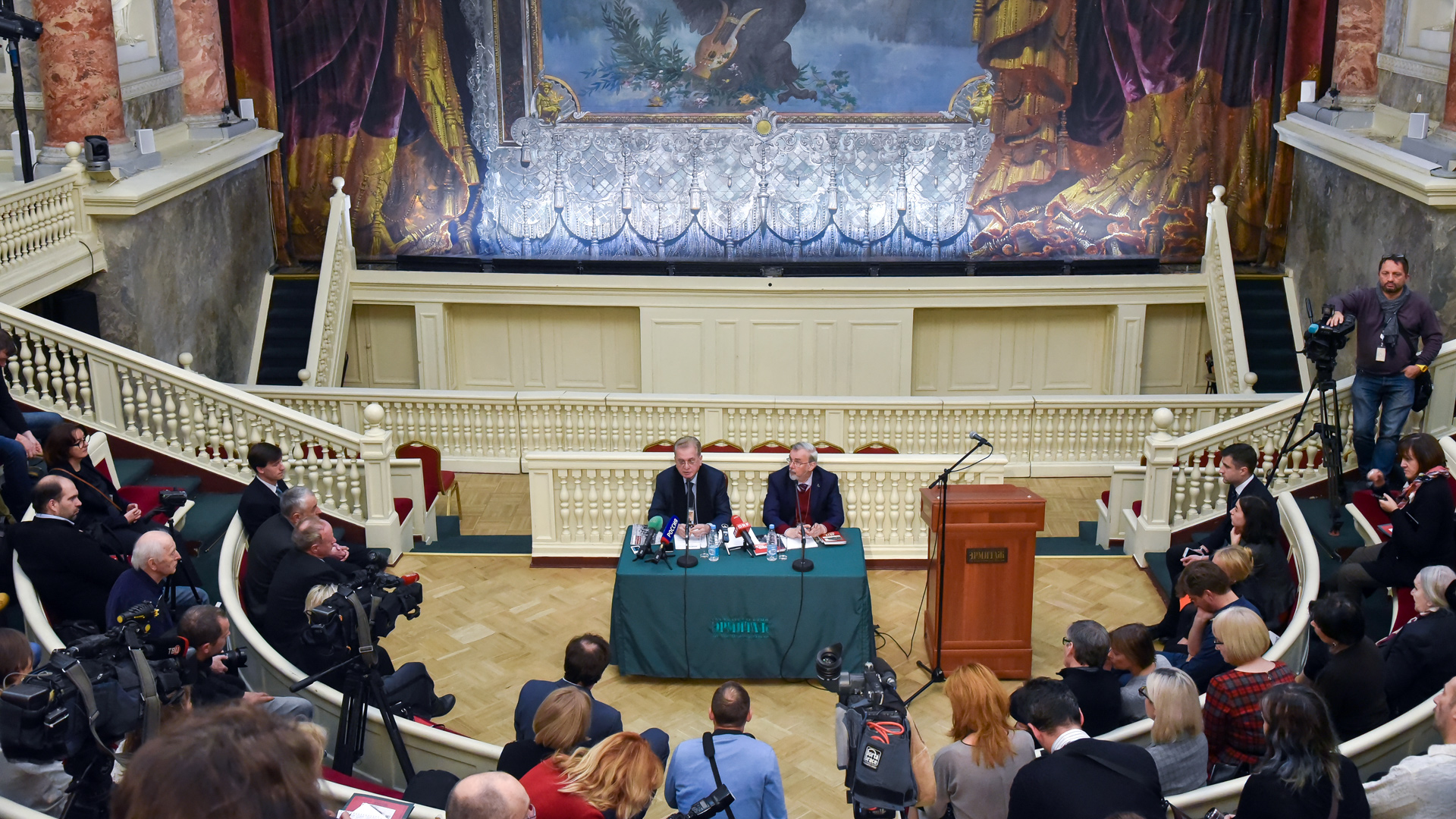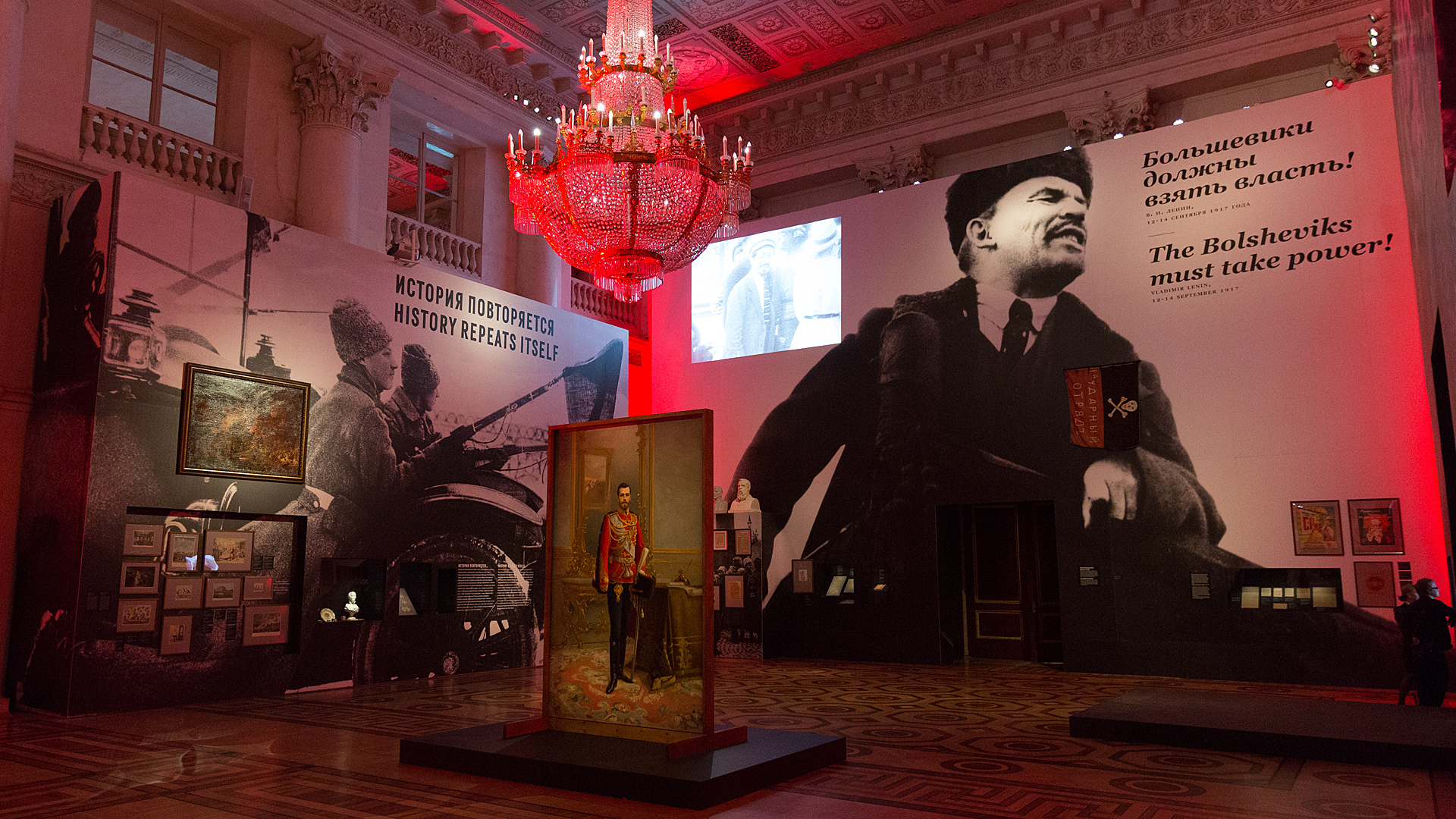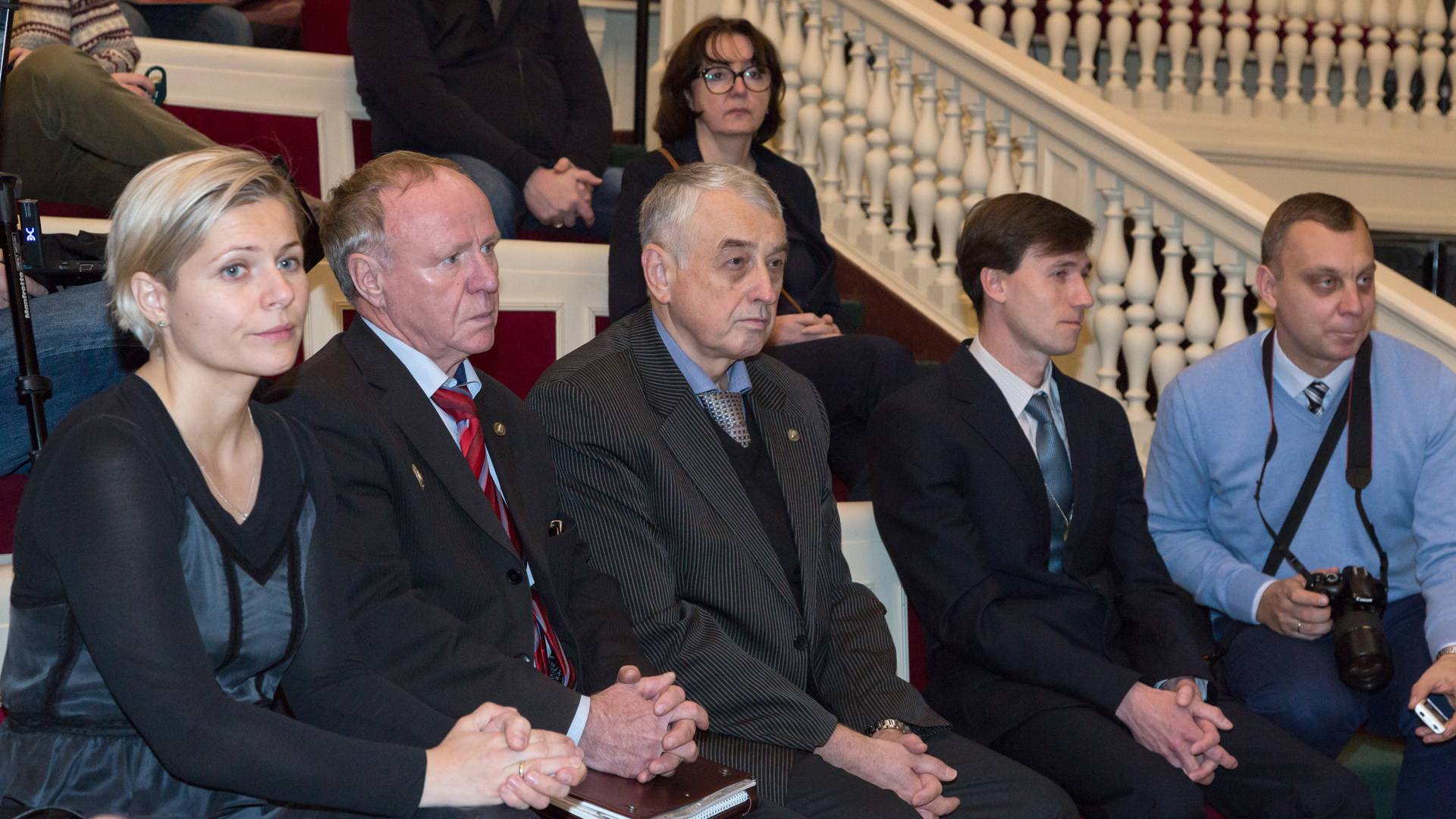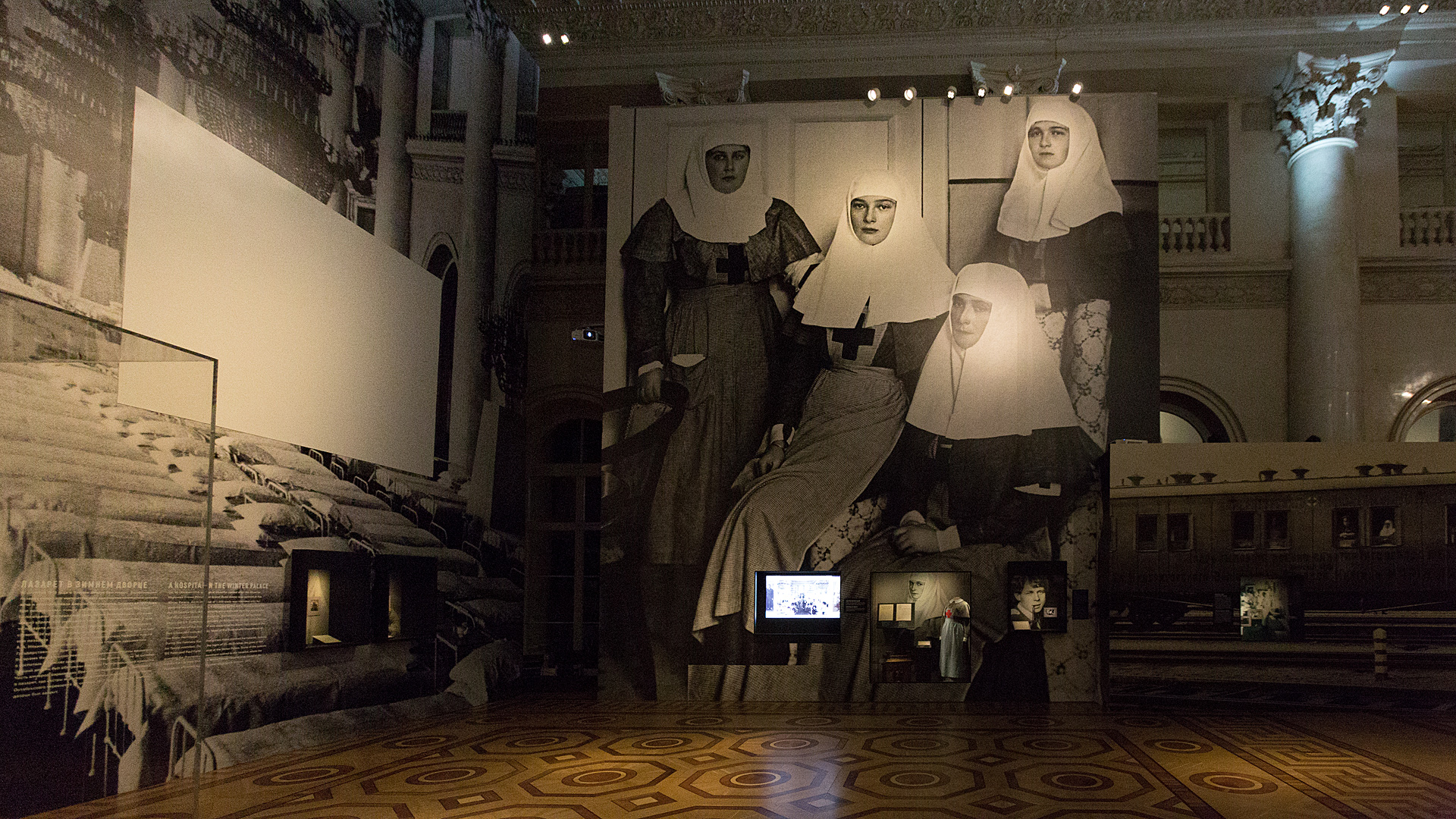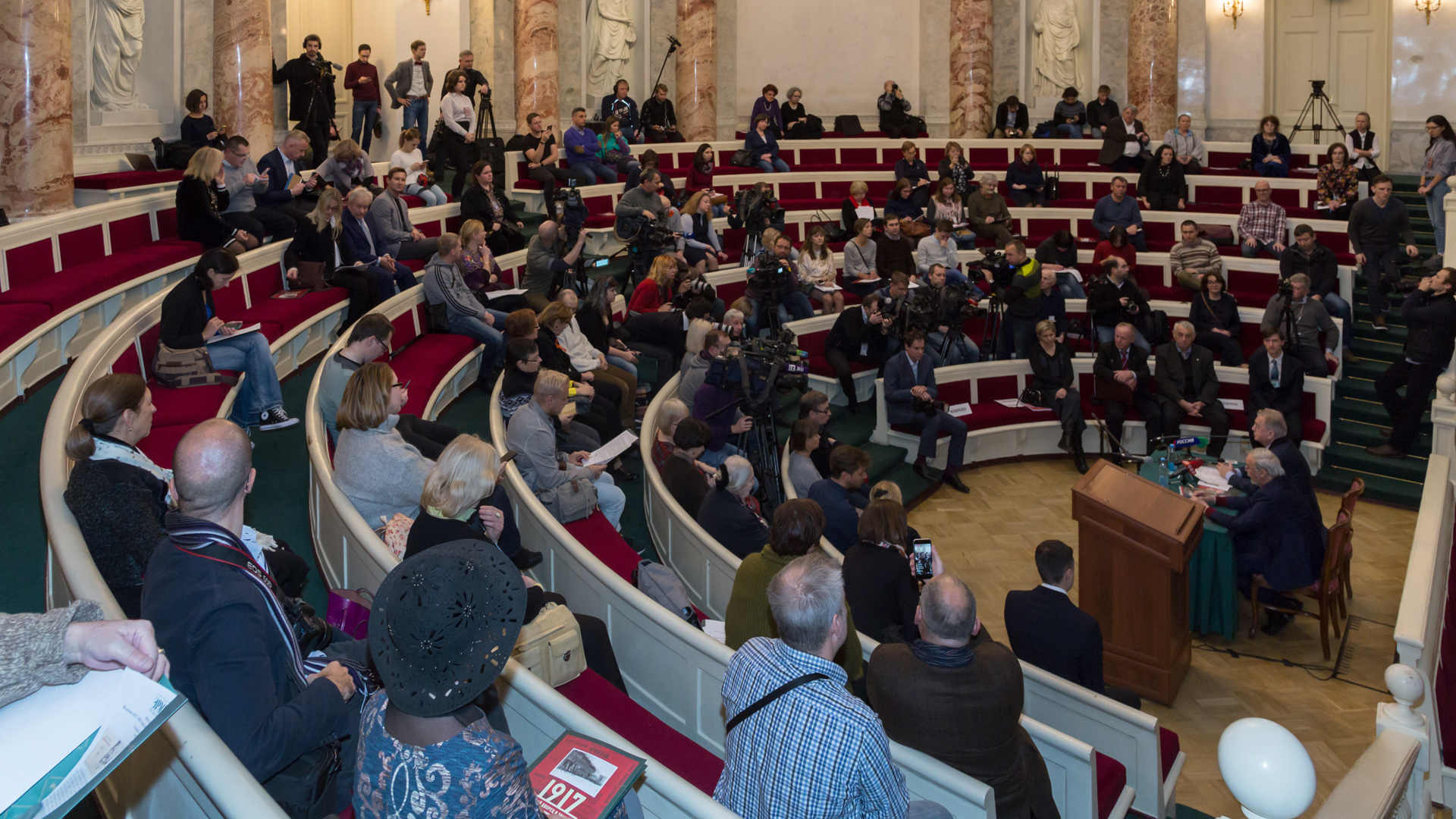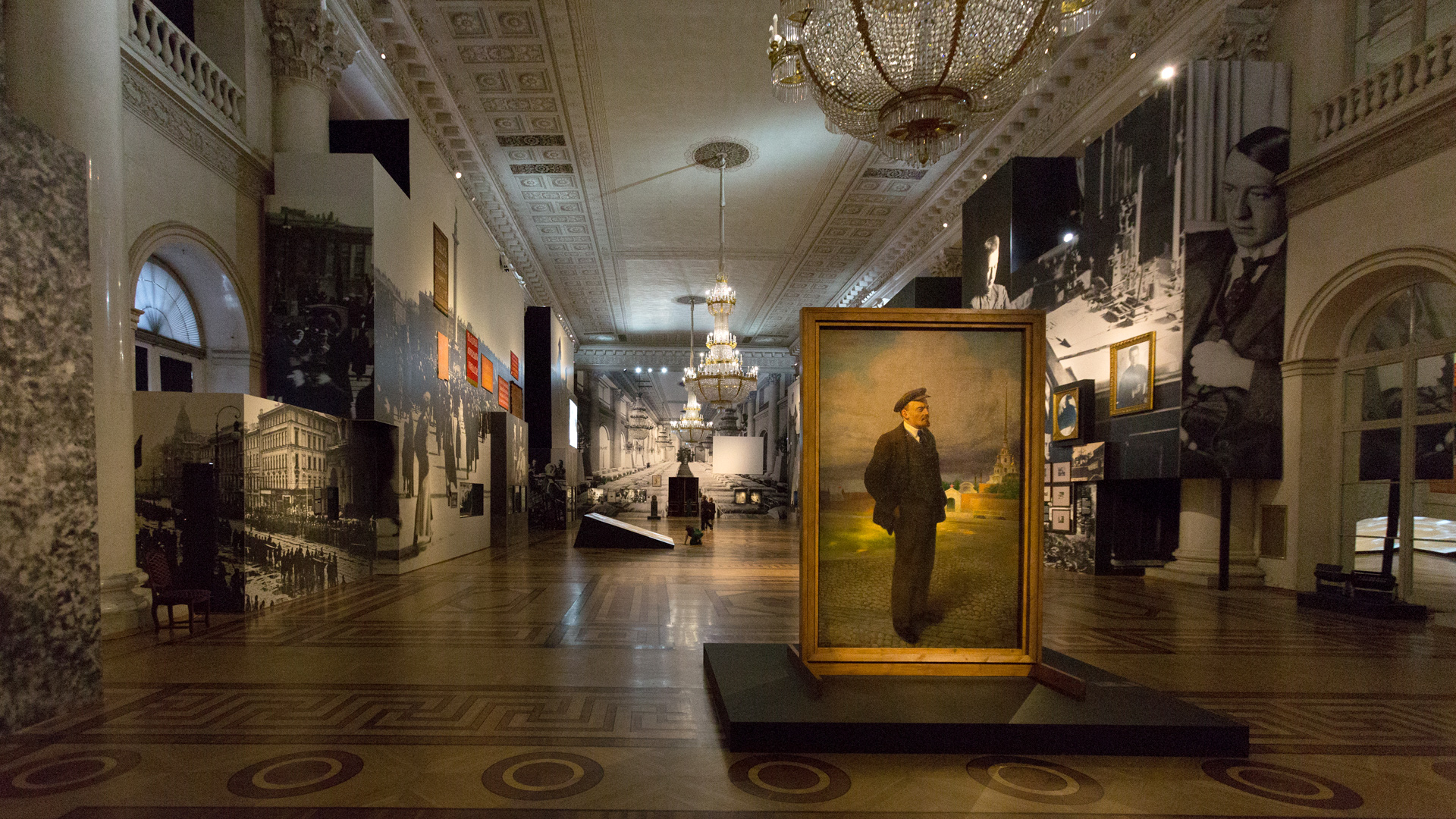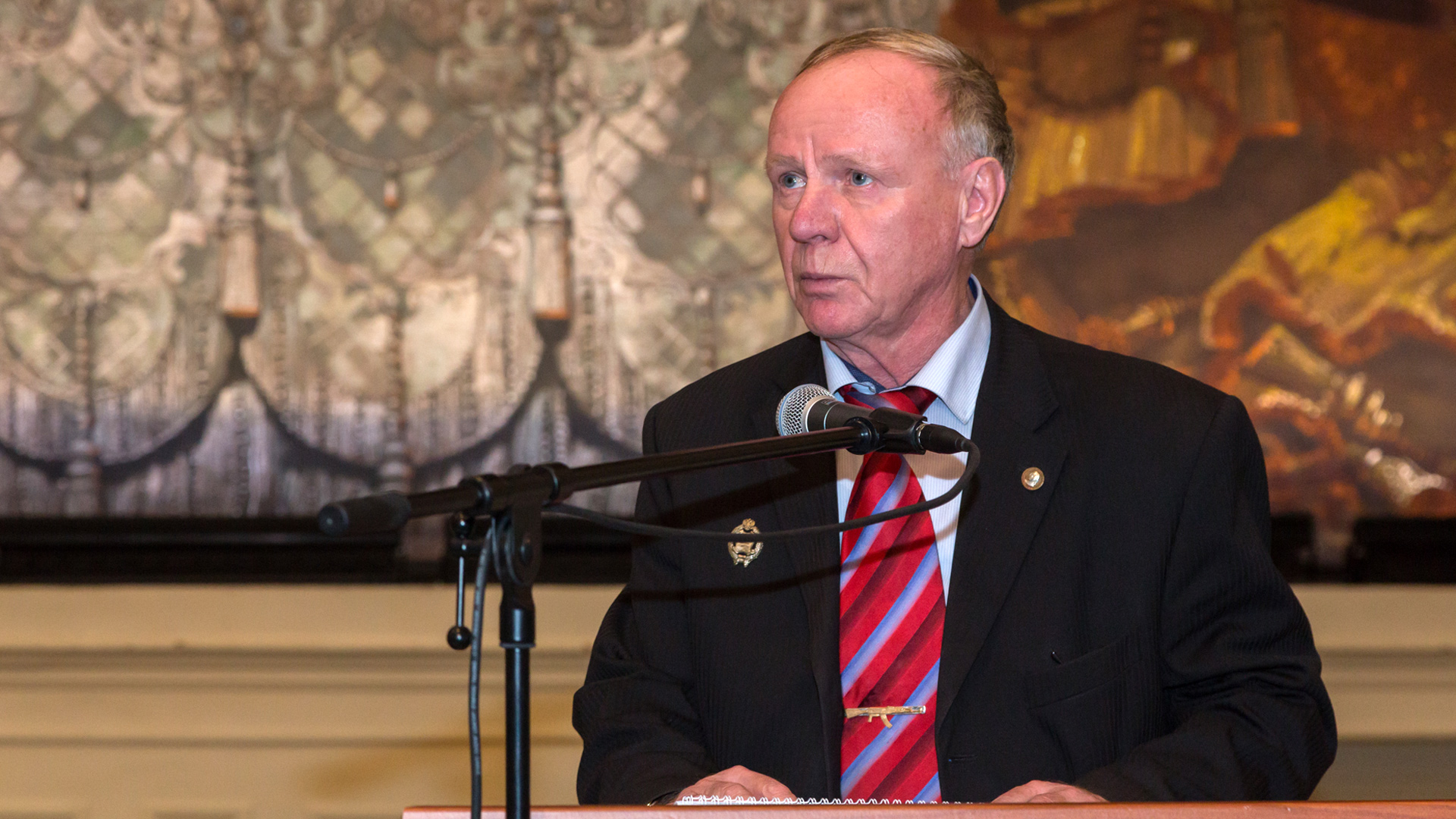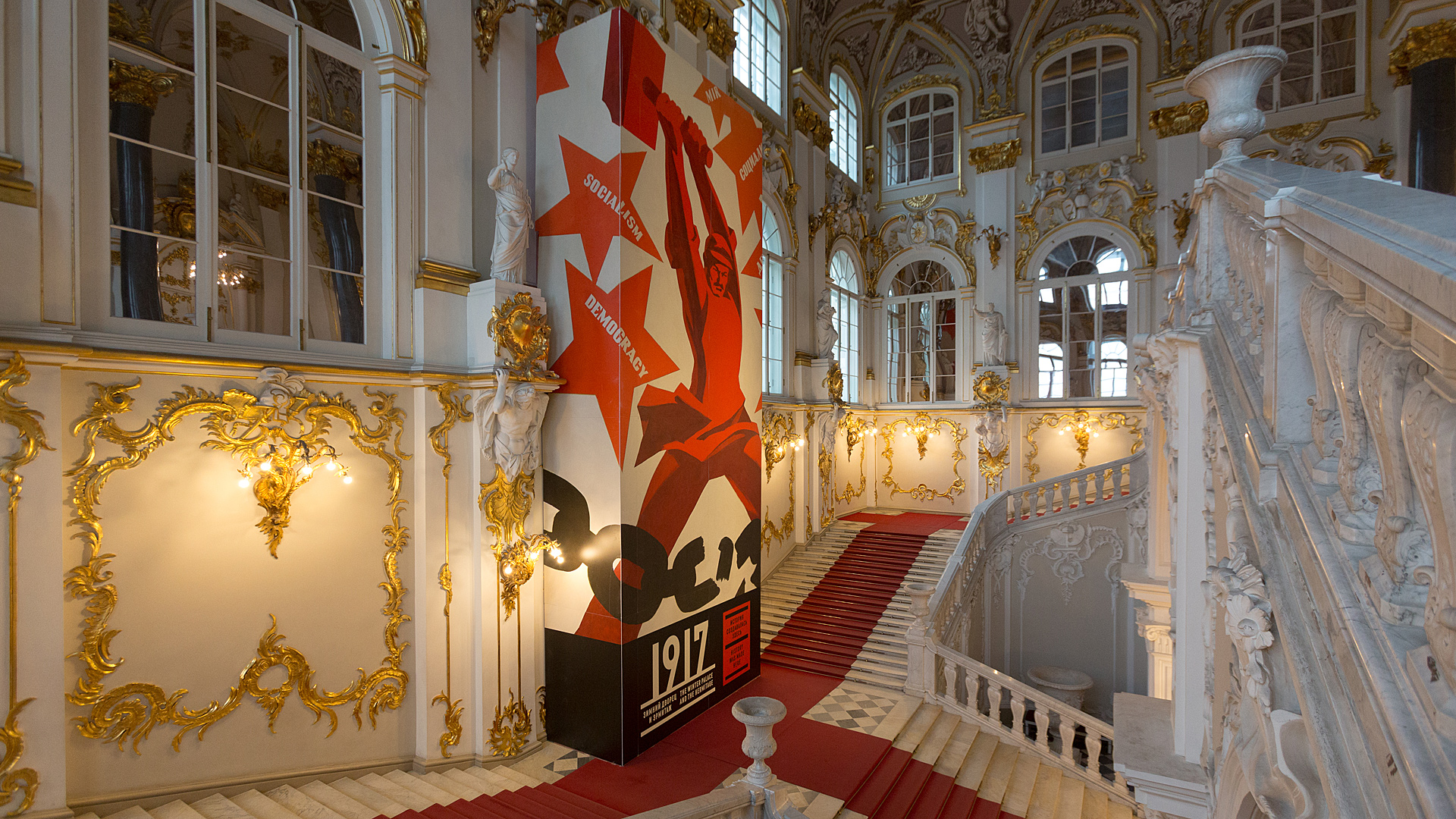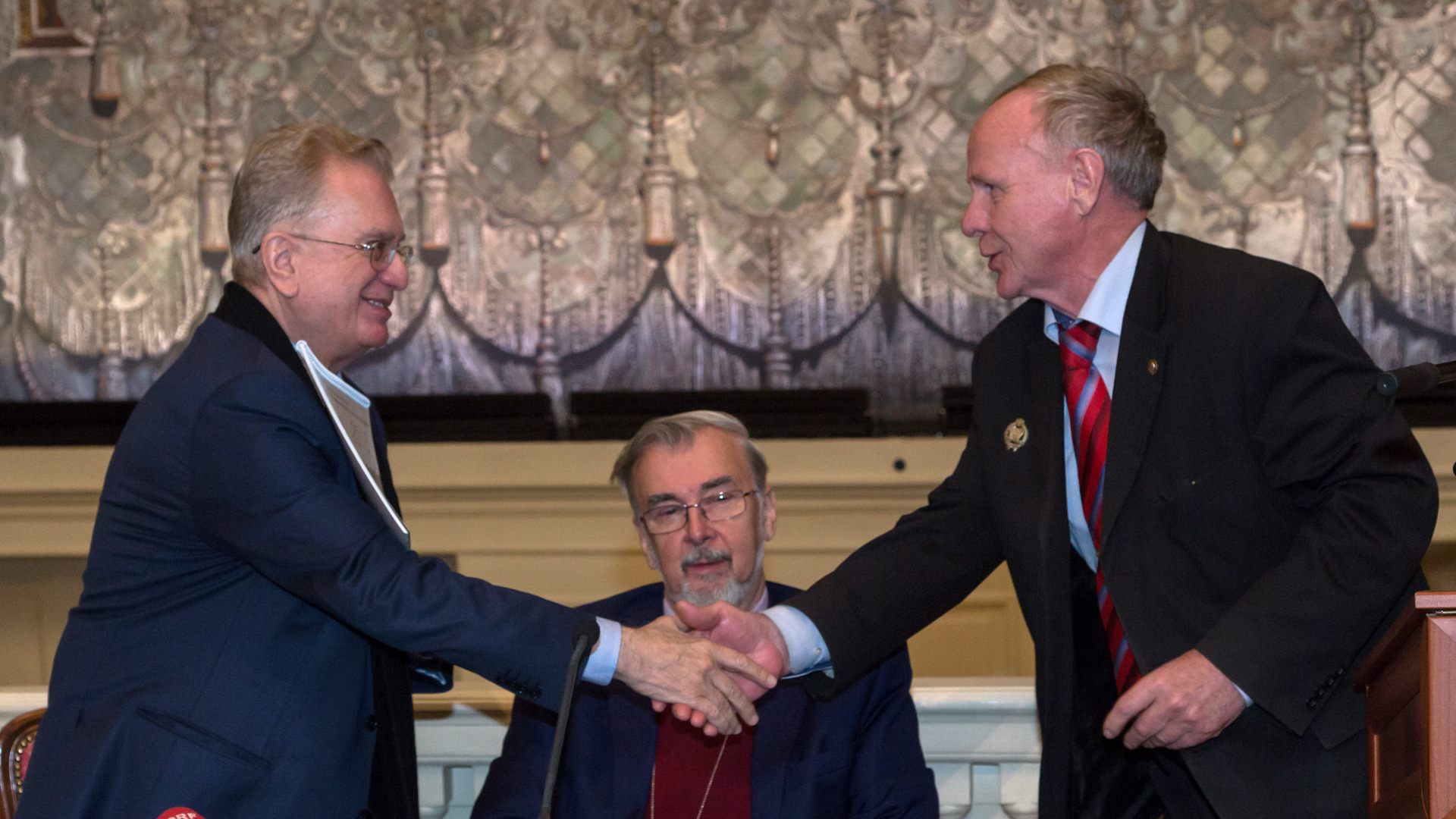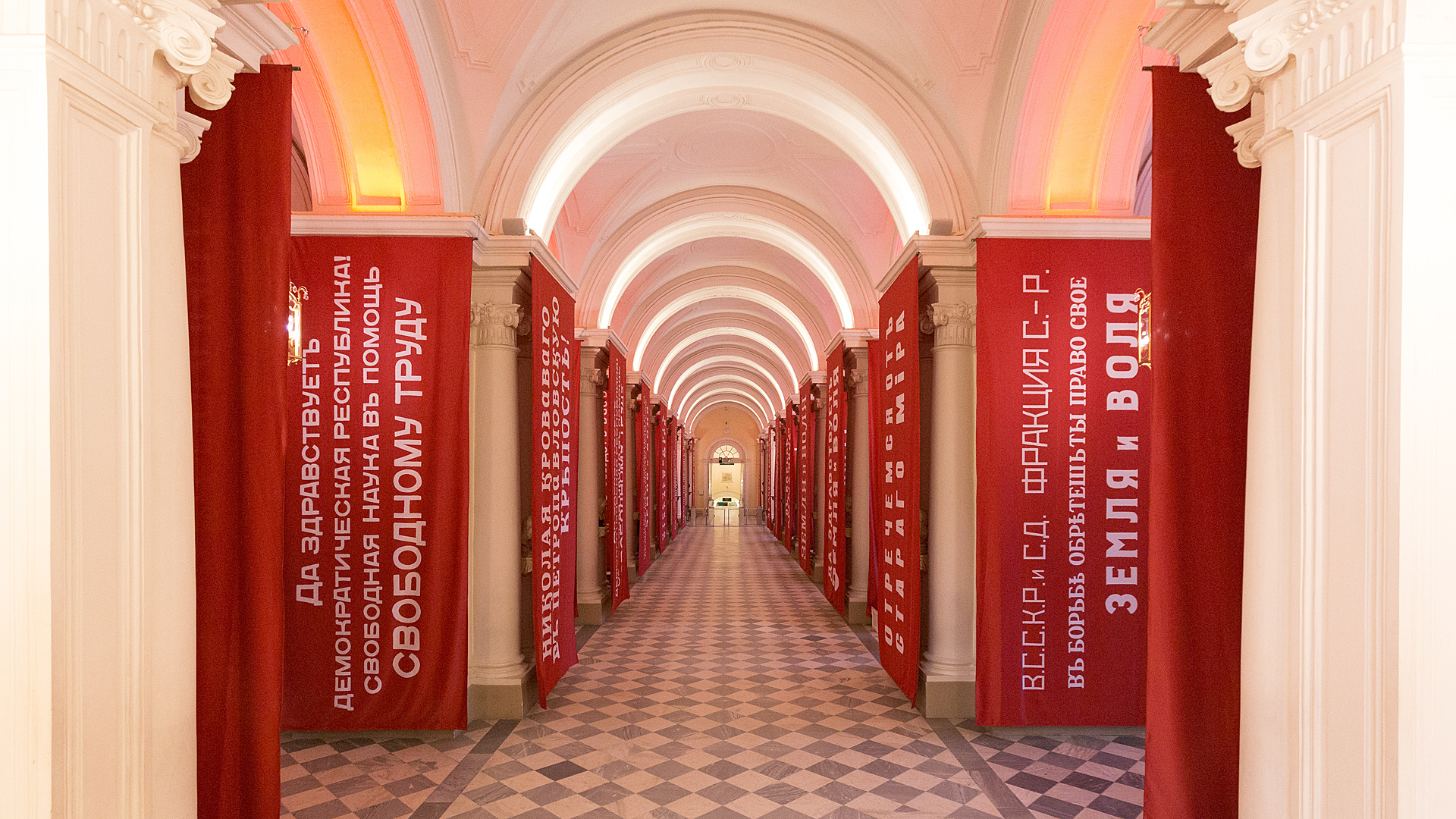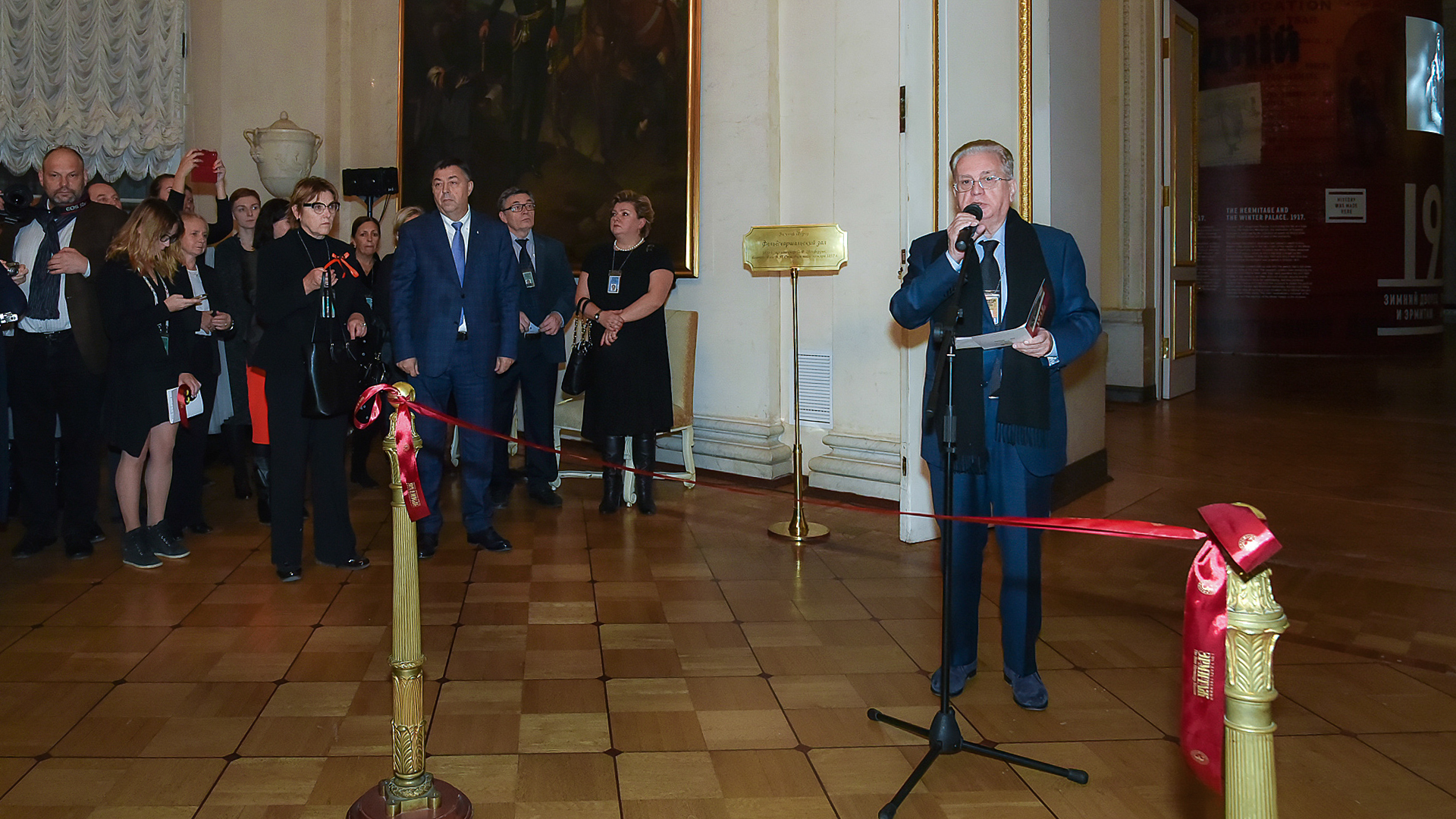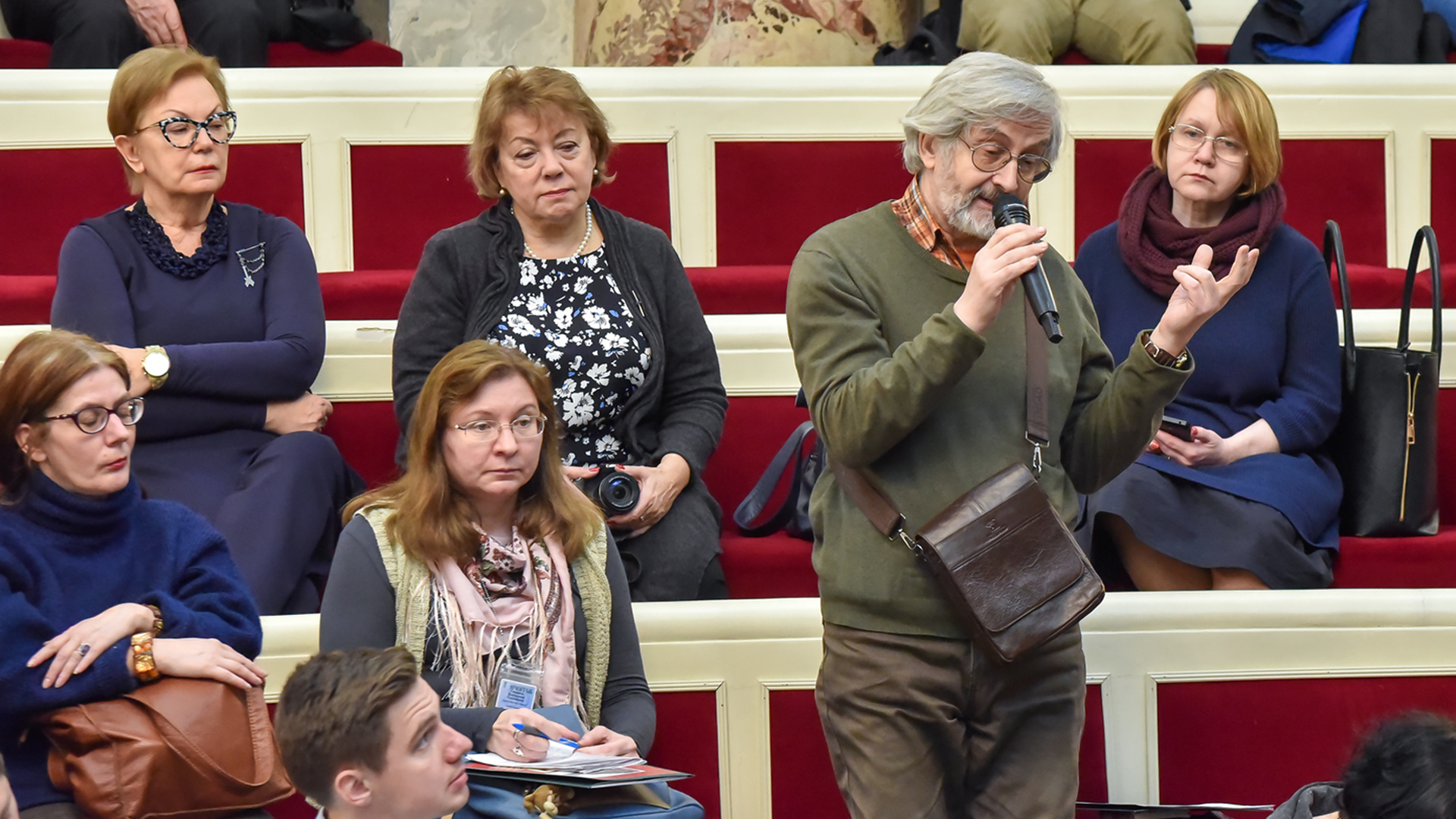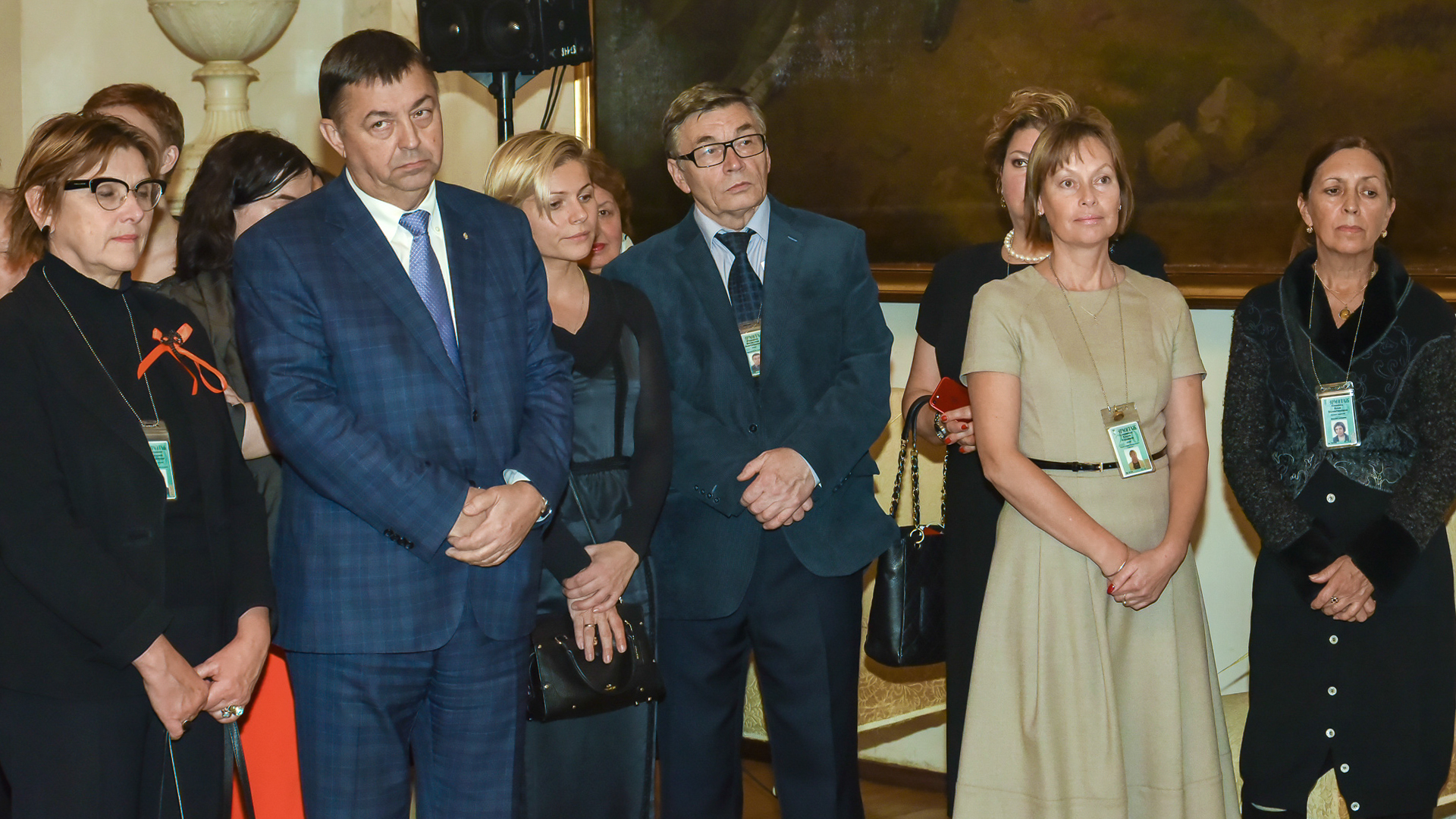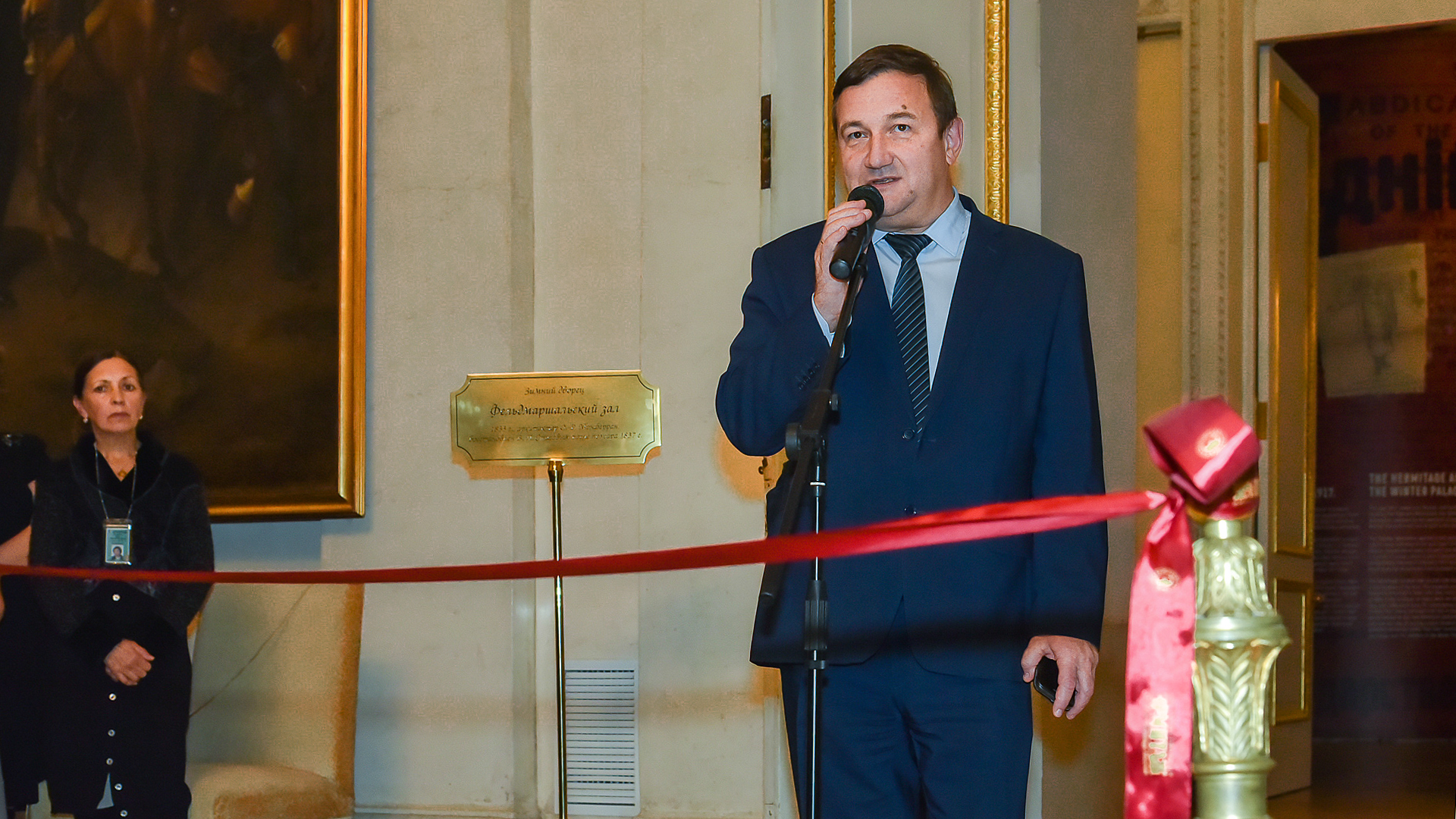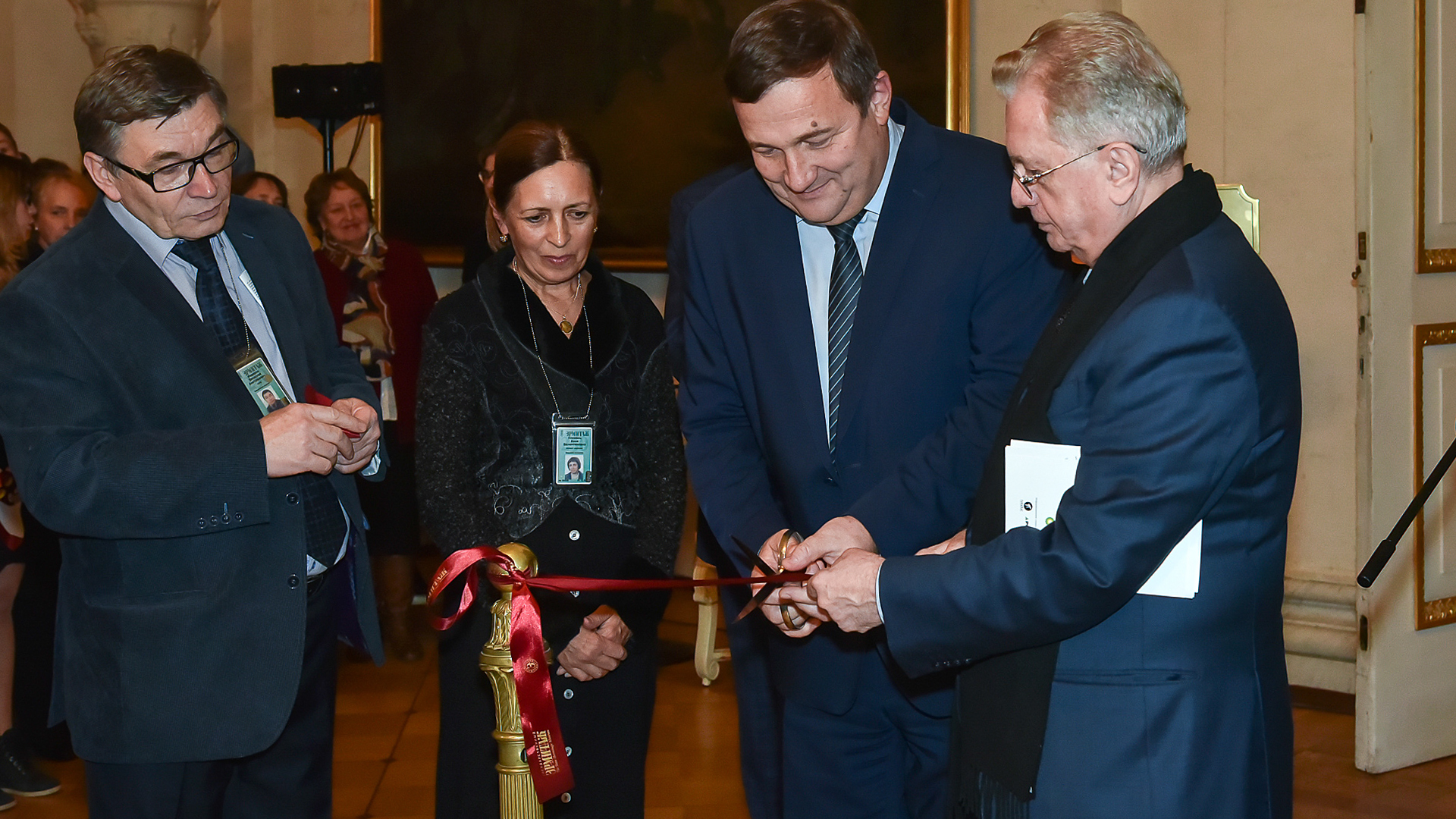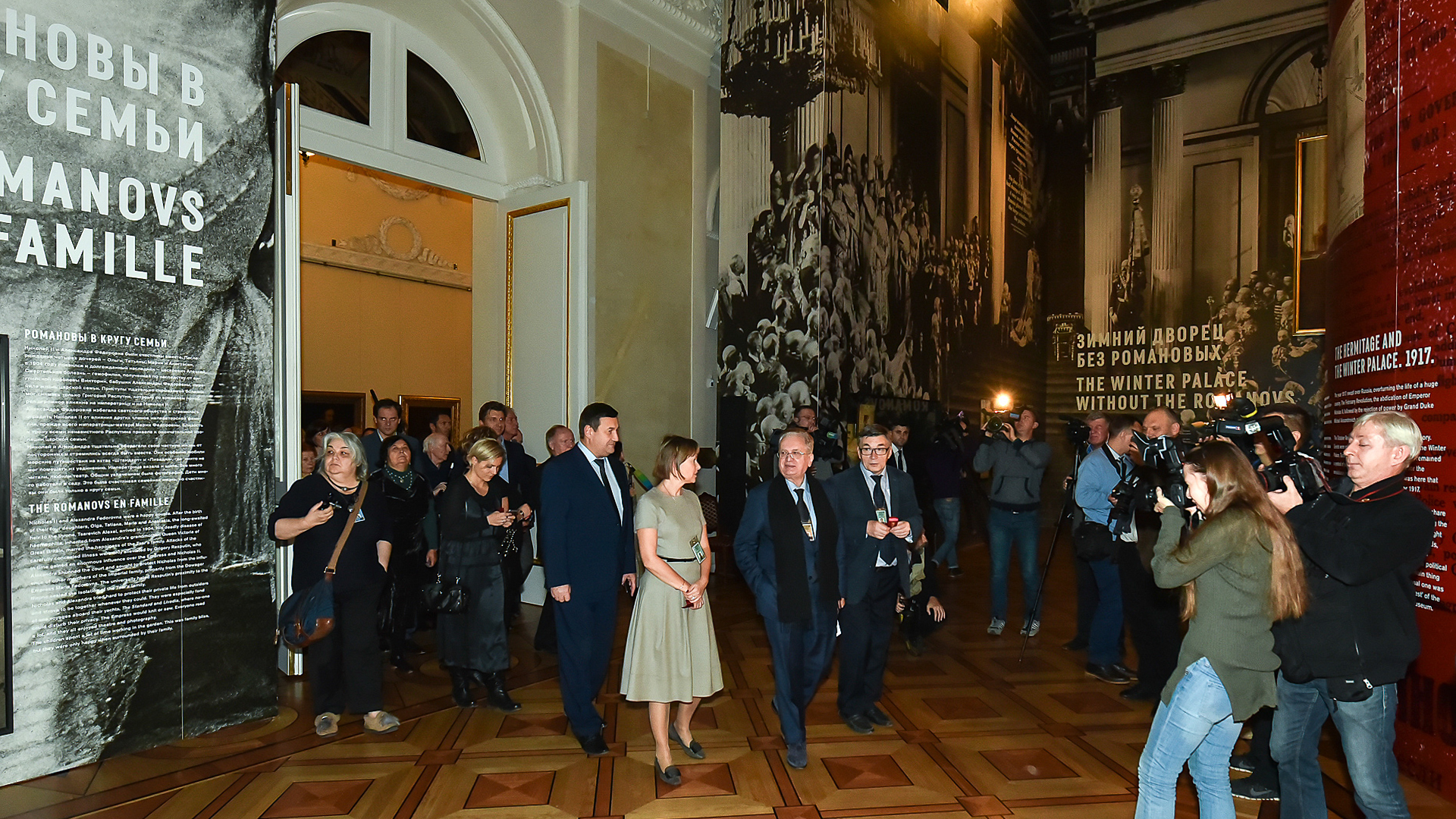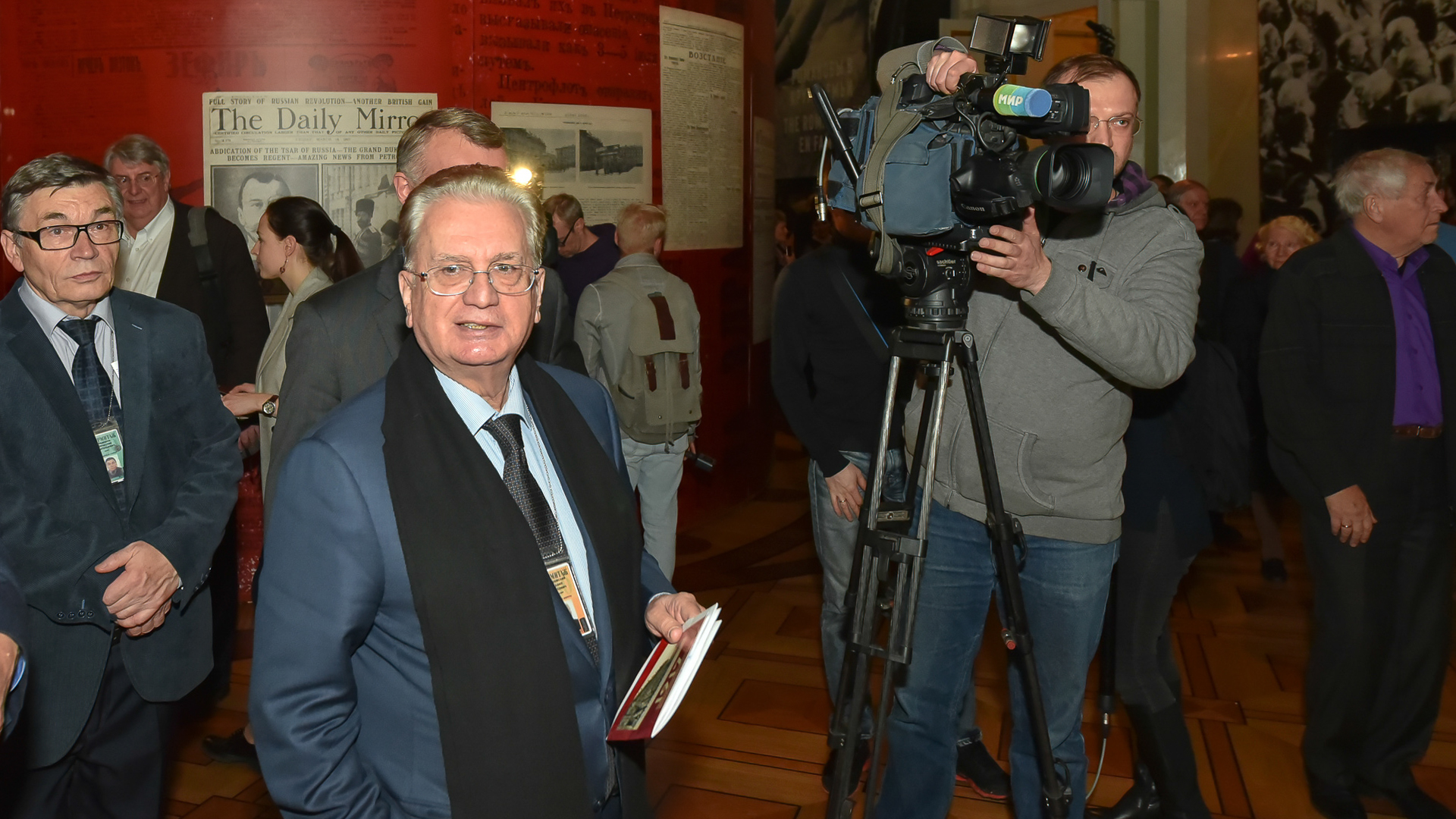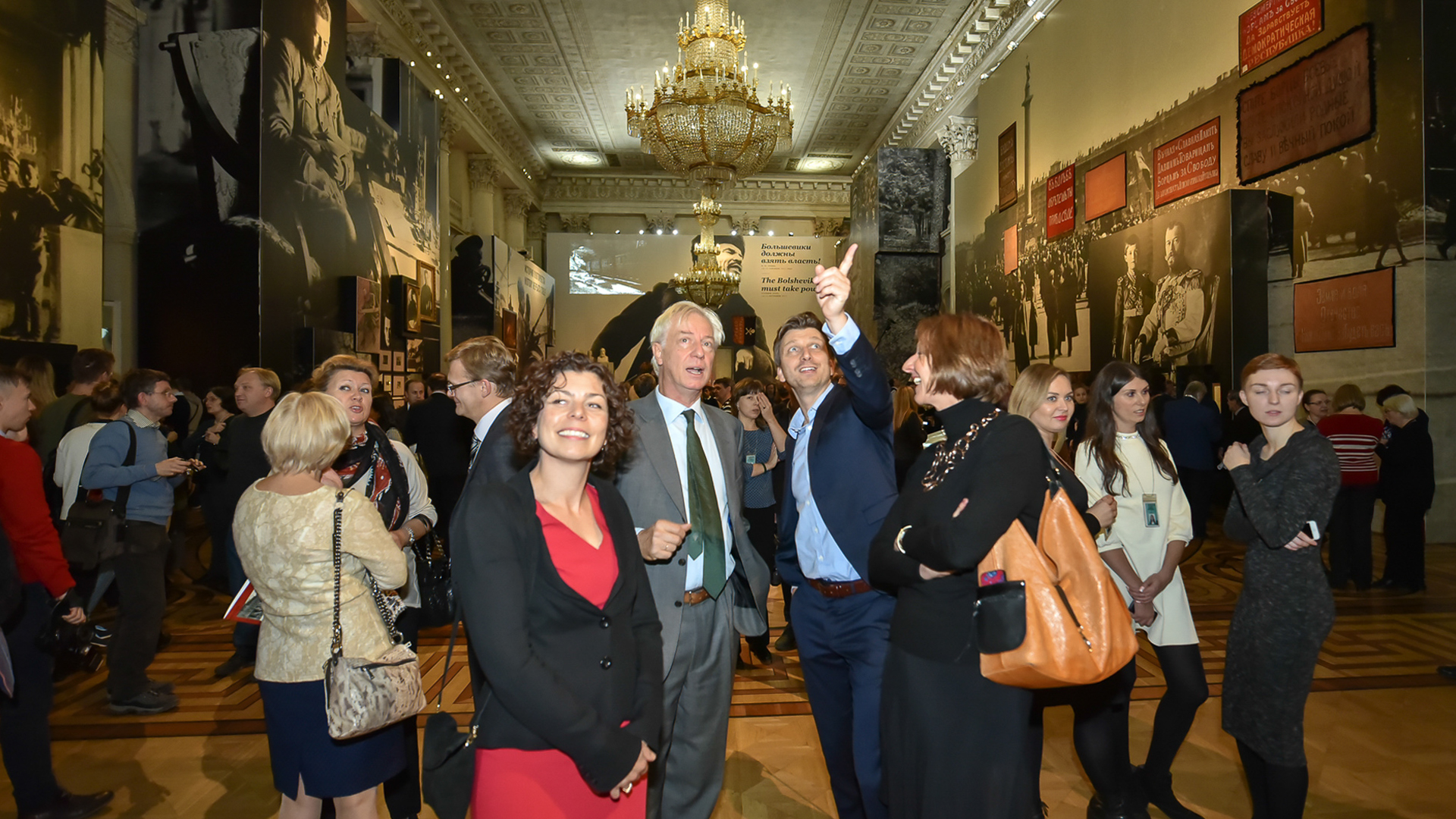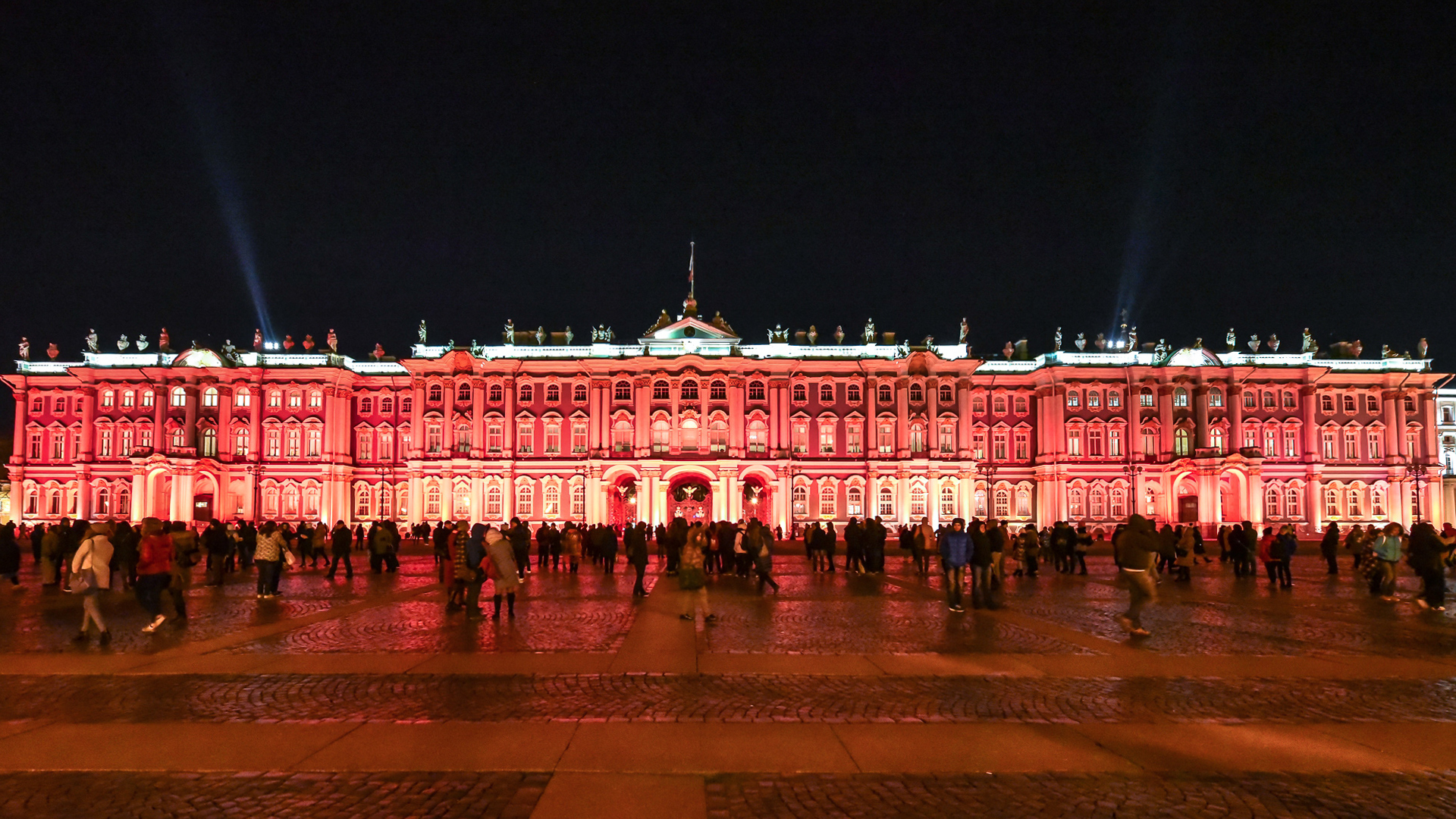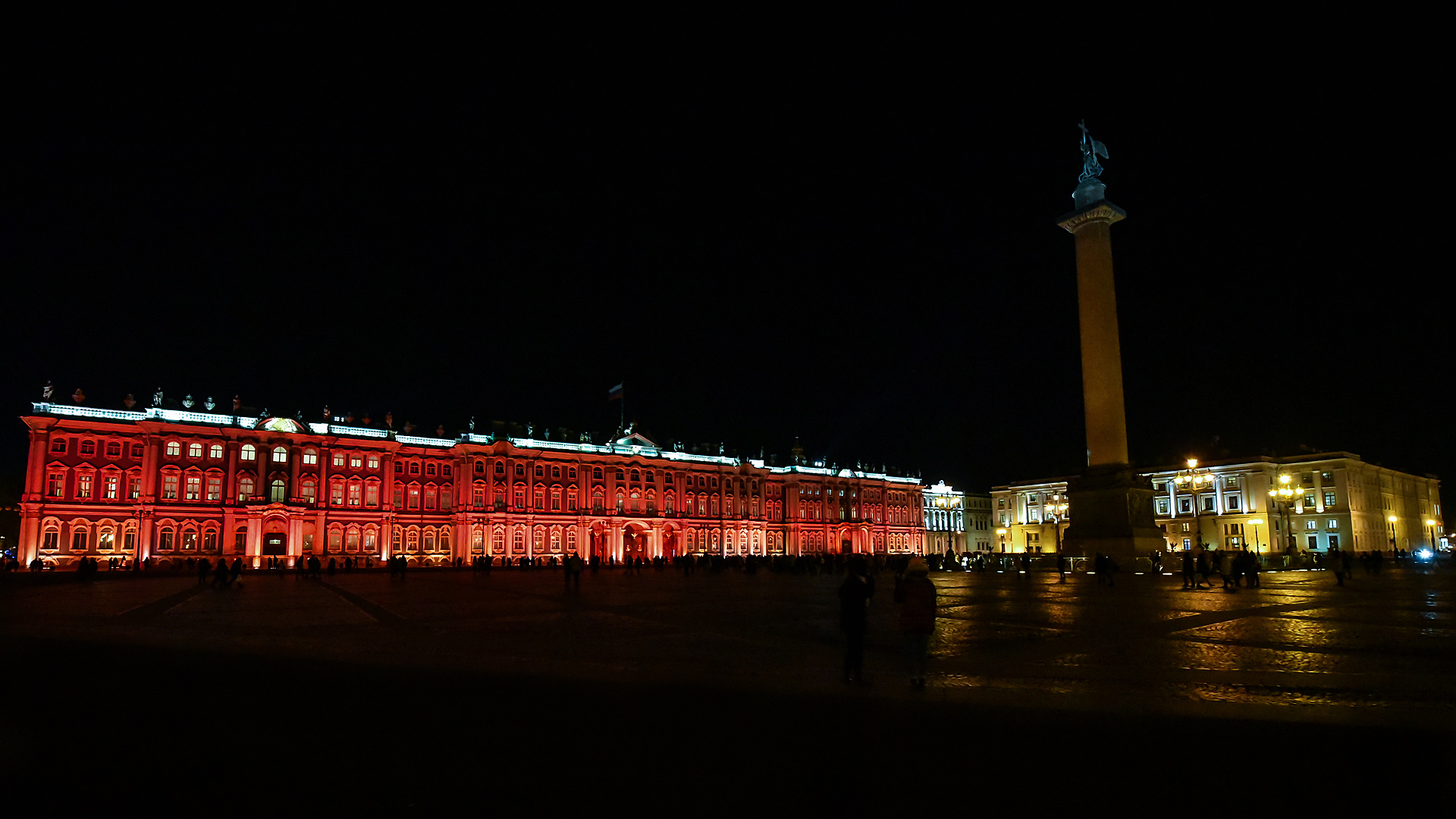The Winter Palace and the Hermitage in 1917. History was made here
- 1 / 23
- 2 / 23
- 3 / 23
- 4 / 23
- 5 / 23
- 6 / 23
- 7 / 23
- 8 / 23
- 9 / 23
- 10 / 23
- 11 / 23
- 12 / 23
- 13 / 23
- 14 / 23
- 15 / 23
- 16 / 23
- 17 / 23
- 18 / 23
- 19 / 23
- 20 / 23
- 21 / 23
- 22 / 23
- 23 / 23
In 2017, to mark the 100th anniversary of the Russian Revolution, the State Hermitage has prepared a major project under the general title “The Storming of the Winter Palace”. The central event of the project will be the exhibition “The Winter Palace and the Hermitage in 1917. History was made here”, the formal opening of which is taking place on 25 October 2017. The general sponsor of the exhibition is the VTB Bank.
The year 1917 swept across Russia, bringing turmoil to the life of the huge country. The February Revolution and the abdication of Emperor Nicholas II, followed by Grand Duke Mikhail Alexandrovich’s non-acceptance of supreme power, put an end to the monarchy. The October Revolution ushered in a new era in world history. Events unfolded in the very centre of the capital – in the Winter Palace. Even converted into a huge military hospital, it remained a symbol of imperial rule. That is why it was here that the revolutionary masses gathered in February 1917 and right here that the Provisional Government was arrested in October 1917.
The events of 1917 also affected the Hermitage, which experienced in full measure all the cataclysms of that time. The museum’s curators protected the treasures entrusted to them. They kept watch in the museum round the clock as there were not enough guards, oversaw the evacuation of the collections and refused to allow exhibits to be taken from the museum to suit the political ends of the new Bolshevik rulers. Most importantly, they began to implement the idea of turning a court museum into a national one. The Hermitage’s main “revolutionary achievement” was the joining of the Winter Palace to the museum: Imperial Hermitage and imperial residence were united in one of the world’s greatest museums.
The state rooms of the Neva Enfilade of the Winter Palace – from the Jordan Gallery on the ground floor to the Small Dining-Room on the main floor – are the setting for the chief exhibition of 2017, telling about the museum and those in power, about the museum and the revolution, about the museum buildings and the imperial residence in 1917. The display includes more than 250 items from the collections of the State Hermitage, the State Archive of the Russian Federation, the Military Historical Museum of Artillery, Engineers and Signal Corps, the Military Medical Museum, the Pavlovsk State Museum Preserve, the Fabergé Museum and the Russian National Museum. The exhibition will also feature articles from private collections and a double portrait of Emperor Nicholas II and Vladimir Ilyich Lenin from Secondary School №206 in the Central District of St Petersburg.
The Jordan Gallery and Jordan Staircase will appear as no-one has seen them before – greeting visitors to the Hermitage with revolutionary posters, setting the mood for the main display.
The exhibition in the Forehall will be devoted to the life of the last Russian emperor, Nicholas II, and his family. Personal belongings, photographs, the toys and drawings of the Tsar’s children will tell about the private life of the Romanovs. Here, too, there will be a display about the Winter Palace, the main imperial residence that remained the setting for grand ceremonies and official receptions even after the imperial family moved out to live at Tsarskoye Selo.
By 1917 the Imperial Hermitage was the largest museum in Russia and one of the best in Europe., Individual works by outstanding artists and some of Europe’s best private collections had been bought for it on the orders of the Russian rulers. Its collections included paintings, drawings, sculpture, cameos and intaglios, artistic bronze, porcelain, ivories and a numismatic collection, as well as artefacts from the Ancient World, the Treasure Gallery and Gallery of Peter the Great. By the year of the revolutions, the Hermitage’s stocks numbered over 700,000 items.
The display in the Nicholas Hall tells about the Russian Empire’s involvement in the First World War and the charitable activities of the Romanovs. On 1 August (19 July Old Style) 1914, Germany declared war on Russia. The following day the Emperor had a prayer service held in the Nicholas Hall. On Palace Square a great crowd of ordinary people kneeled while listening to the Emperor’s speech about the declaration of war. In 1915 Nicholas II took the decision to assume personal command of the Russian forces. In leaving the capital for the front, he committed a tragic error. By 1917 he had completely lost control over the situation in Petrograd, as the city had been renamed, where dissatisfaction with the protracted war intensified and public unrest began to grow. By that time, patriotic determination to see the great struggle through to victory had given way to the slogan “Down with the war!”
For the imperial family the war was a personal cause. Both Empresses, Nicholas II’s elder daughters and other members of the imperial family organized military hospitals and hospital trains, where they also worked themselves. “One so much wants to comfort and support these brave men and to stand in for their loved ones who are unable to be beside them!” Alexandra Feodorovna wrote to her husband, the Emperor, in March 1915.
Part of the display will be devoted to the Military Hospital named after the Heir and Tsesarevich Alexei that was opened in the Winter Palace in 1915 and functioned until 27 October 1917. The 1000-bed hospital was intended only for badly wounded soldiers. All the state rooms except the St George Hall were given over to it. The decorations were removed from the halls and the floors were covered with linoleum. The staff of the hospital under head physician Alexander Rutkovsky consisted of 24 doctors, 50 nurses and 120 medical orderlies.
Operations of the most difficult kinds were carried out here, including brain surgery. The exhibition will include photographs, documents, memorial items, equipment (including some made by the House of Fabergé) and medical instruments of the period.
This hall will also house displays devoted to the February Revolution, the Provisional Government and Alexander Kerensky in the Winter Palace, the Bolshevik seizure of power and the last year in the life of the imperial family – in Tsarskoye Selo, Tobolsk and Yekaterinburg.
On 23 February (8 March) 1917, meetings against the war devoted to the Day of Working Women, spontaneously flared up into mass strikes and demonstrations. On 27 February the armed forces began to mutiny: soldiers of the Life Guards Volhynia Regiment refused to obey government orders to fire on demonstrators. On 1 March the Petrograd garrison went over to the side of the strikers. The insurgents stormed and ransacked police stations and the city’s prisons, releasing the inmates, criminals as well as political detainees. Badly informed by contradictory reports from the capital, Nicholas II only left army headquarters in Mogilev for Petrograd on 1 March, but the imperial train was halted at Pskov on the orders of the hastily formed Provisional Committee of the State Duma. On 2 March, on the initiative of, and under pressure from, the Duma and the army high command, Emperor Nicholas II signed the Act of Abdication from the Russian throne.
On 2 (15) March 1917, the Provisional Committee of the State Duma and the Executive Committee of the Petrograd Soviet of Workers’ and Soldiers’ Deputies formed the Provisional All-Russian Government with eleven members, headed by Prince Georgy Lvov. The chief task of the Provisional Government was to summon a Constituent Assembly that would decide the future system of government for the country. The composition of the government changed several times. On 8 July 1917, after Prince Lvov’s resignation, Alexander Kerensky became prime minister. He moved into the Winter Palace together with his staff and a bodyguard of officer cadets.
On the night of 25 October (7 November) 1917, Vladimir Antonov-Ovseyenko, the secretary of the Petrograd Military Revolutionary Committee, and a group of soldiers and sailors arrested members of the Provisional Government in the Small Dining-Room of the Winter Palace. They entered the palace unobstructed since by that time the bulk of those defending the government had left the building. Only a part of the Women's Battalion of Death and a few cadets outside the Small Dining-Room were prepared to defend the government to the last, but the ministers decided to avoid bloodshed and ordered them to stop resisting. The October seizure of power was over. A commemorative display devoted to the arrest of the Provisional Government in the early hours of 26 October 1917 will be installed in the Small Dining-Room.
On 9 March 1917, immediately on rejoining his family in Tsarskoye Selo, the former Emperor was placed under house arrest, just as General Lavr Kornilov had arrested Alexandra Feodorovna the day before. In the summer of 1917 the Provisional Government moved the whole family to Tobolsk in Siberia. After October, the question of “bringing Nikolai Romanov to Petrograd and putting him on trial” was repeatedly raised at meetings of the Council of People’s Commissars, the new Bolshevik government. It was, however, decided for the moment to move the family “to a more reliable place”. In late April 1918, the Romanovs were transported to Yekaterinburg in the Urals, where they were held in the house of the engineer Ipatyev. There, in the early hours of 17 July 1918, Emperor Nicholas II, Empress Alexandra Feodorovna, Grand Duchesses Olga, Tatiana, Maria and Anastasia, and the Heir and Tsesarevich Alexei were all shot.
The display in the Concert Hall will tell about the Hermitage during the revolutionary events of 1917 and the Winter Palace after the “storm”. Following the arrest of the Provisional Government, the soldiers and sailors scattered through the palace in search of the tsars’ gold and other treasures. The private apartments of the imperial family were ransacked. The exhibition will include photographs of the plundered rooms that were taken by the court photographer Karl Kubesh, personal items that were damaged and a portrait of Alexander II with holes from bayonets.
During the February Revolution, the Hermitage was closed to the public. The revolution and Nicholas II’s abdication were received enthusiastically in the museum. The Hermitage staff did not, however, accept the October Revolution, regarding the new authorities as usurpatory. Count Dmitry Tolstoi, who was director of the museum from 1909 to 1918, recalled: “One might say that at that time the whole Hermitage lived a difficult, feverish existence. It seemed as if you were experiencing a nightmare or burying someone very dear and close to you…”
The Bureau Caspar Conijn, based in Amsterdam in the Netherlands, has been invited to work on the design for the exhibition. The authentic exhibits are accompanied by state-of-the-art exhibition technologies – audio, video, large reproductions, artistic lighting. This will be the first time that such a synthesis between exhibits, light, sound and a visual component has been created in the Hermitage.
The exhibition curators are Viacheslav Anatolyevich Feodorov, head of the State Hermitage’s Department of the History of Russian Culture, and Yelena Yuryevna Solomakha, deputy head of the Department of Manuscripts and Documents.
